Squat: High Bar Vs. Low Bar
Which Builds More Muscle? More Strength?
High Bar Vs Low Bar squatting is a subject discussed very often among gym goers. Many claim that one builds more muscle or strength than the other, but at the end of the day it really doesn’t matter.
The most common misconception around these two types of squat variations is because the majority of people can squat 5 – 10% MORE on their low bar squat, they assume more weight equals more muscle. This is just ignorance at its best.
As many of you have learned from my previous video where I talk about the 3 MUSCLE BUILDING MECHANISMS (Mechanical Tension, Metabolic Stress & Muscle Damage) that how much weight you lift is only one part of the equation.
To add even more to this, your body doesn’t know how much weight you are lifting, only your EGO does.
So when you squat 225lbs for 10 reps with a high bar squat, and then squat 245lbs for 10 reps with a low bar squat, your body is still working the same muscles just as hard for the same amount of growth.
Let me explain.
When you drop the bar a little lower on your back, you’re effectively decreasing how long the lever of your torso is for the movement.
A great example of this is holding 10lbs of weight in your hand vs on your upper arm with your arm outstretched. When you hold the 10lbs in your hand your shoulder has to generate more torque/power to keep your arm outstretched. But when you place the 10lbs on your upper arm, the amount of torque/power your shoulder has to generate is much less. This is the concept you need to understand in relation to high bar vs. low bar squatting.
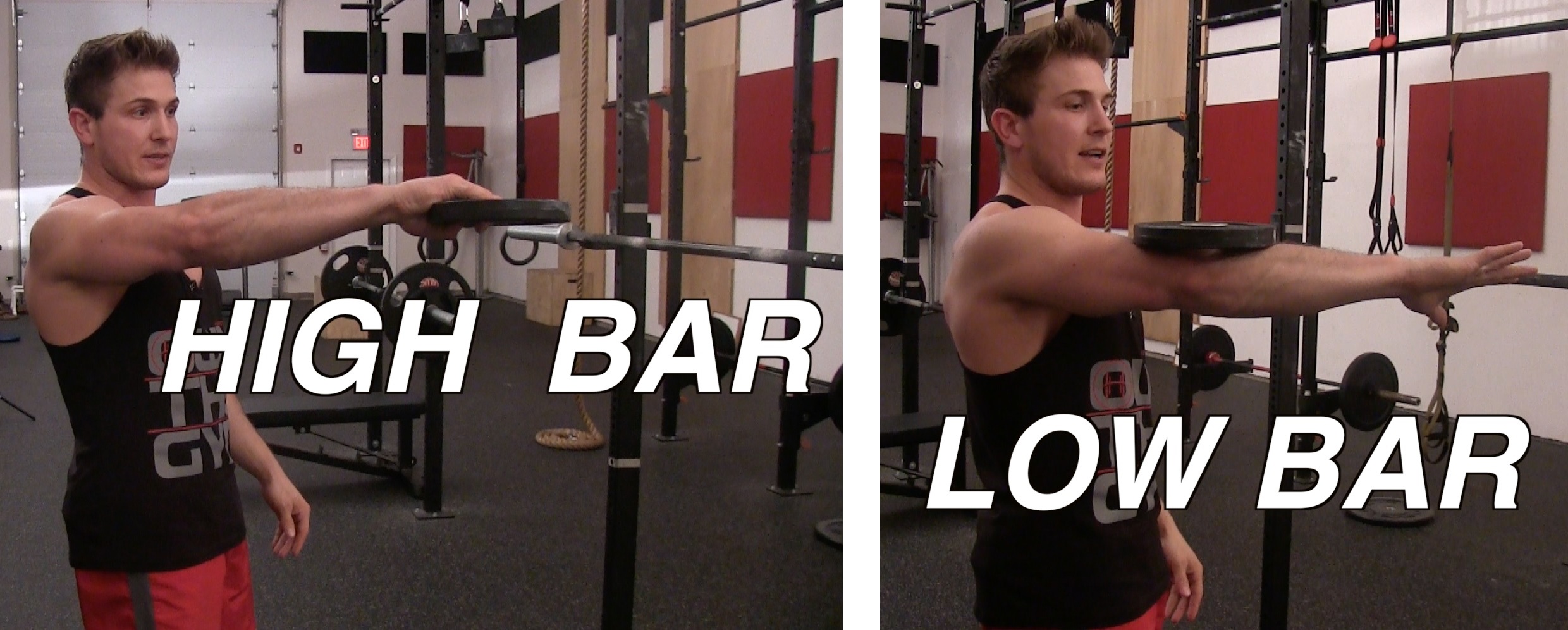
Because the barbell is 2 – 3 inches lower on your back during a low bar squat, the movement is more like having the 10lbs on your upper arm. This is why most people are 5 – 10% stronger when they low bar squat. The distance in relation to the barbell and your hips & knees is shorter. Thus your joints, hips and knees, do not need to generate as much torque/power to move the same amount of weight when compared to a high bar squat.
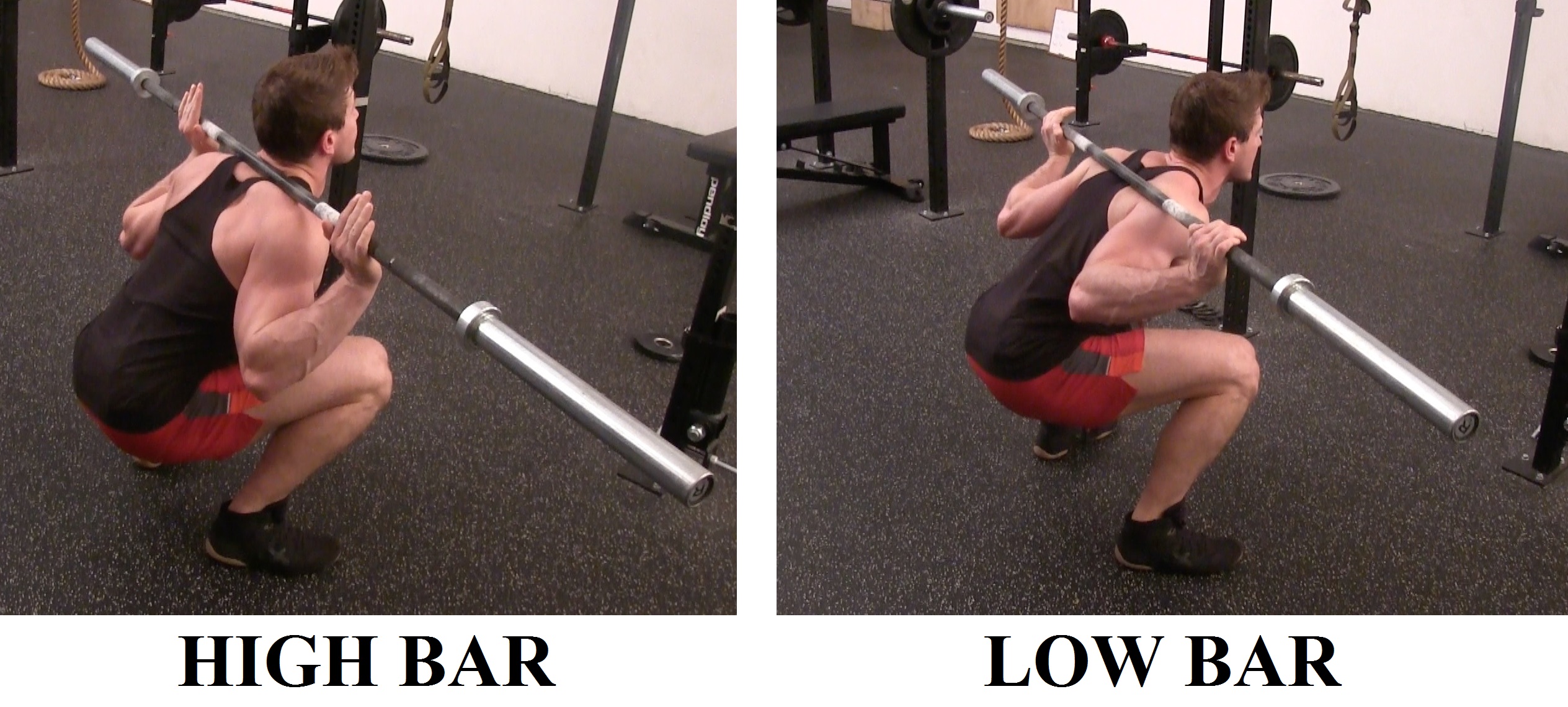
Now, some may still claim that the range of motion is longer when high bar squatting so there is room for more muscle activation in terms of muscle growth. My response to this is that yes there may be a slightly longer range of motion but the difference is not big enough to cause. Well, unless you are using improper form. We all see the ego maniacs squatting 10 times more than they should and only stopping at 90 degrees and they wonder why they see no progress.
How Do I know What Squat Technique Is Best For Me?
Choosing the right technique comes down to what you are training for. If you plan on becoming a competitive power lifter it is probably in your best interest to learn how to low bar squat if it is going to help you move 5 – 10% more weight. In power lifting, it is not about being the strongest person, it is about who can move the most amount of weight, period. If you are slightly stronger than someone else, but they squat low bar and you squat high bar, chances are they will beat you.
With that being said, if your goal is general health and fitness you are probably better off sticking to the high bar squat. When you high bar squat you have to maintain more of an upright position which will help your body become stronger for movements like cleans and snatches.
If you adopt high bar squatting and in the future decide to enter a powerlifting competition, you do not need to kick this technique to the curb. Just make sure that in the 6 – 8 weeks leading up to your event that you lock in your low bar squat form. This is because your body needs to make the necessary adjustments to get used to the technique and maximize its performance. Not to mention that your body also will need to get used to moving the additional weight the low bar technique brings to the table.
Final Tips- Shoulder & Hip Warm-Ups
No matter what variation of squat technique you use, you should always be working on your flexibility and mobility to help perfect your squat form. Tight shoulders and hips can drastically change your squat form.
Here are a few warm-ups that you should be doing to help increase your overall flexibility.
Choose at least 2 – 3 to perform daily. (Morning, Night, Before Workout etc.)
Keep in mind that the more you warm-up, the better you will feel over time.
Dumbbell Shoulder Rotation

Lay flat on your back holding a dumbbell in your right hand. Once in place form a 90 degree angle with your elbow and while keeping your shoulder blades on the ground, rotate your shoulder forward and back as far as you can. Only rotate your shoulder as far as your flexibility will allow never letting your shoulder come off the ground.
Complete 2 sets of 10 – 12 reps per side.
Shoulder Breaker
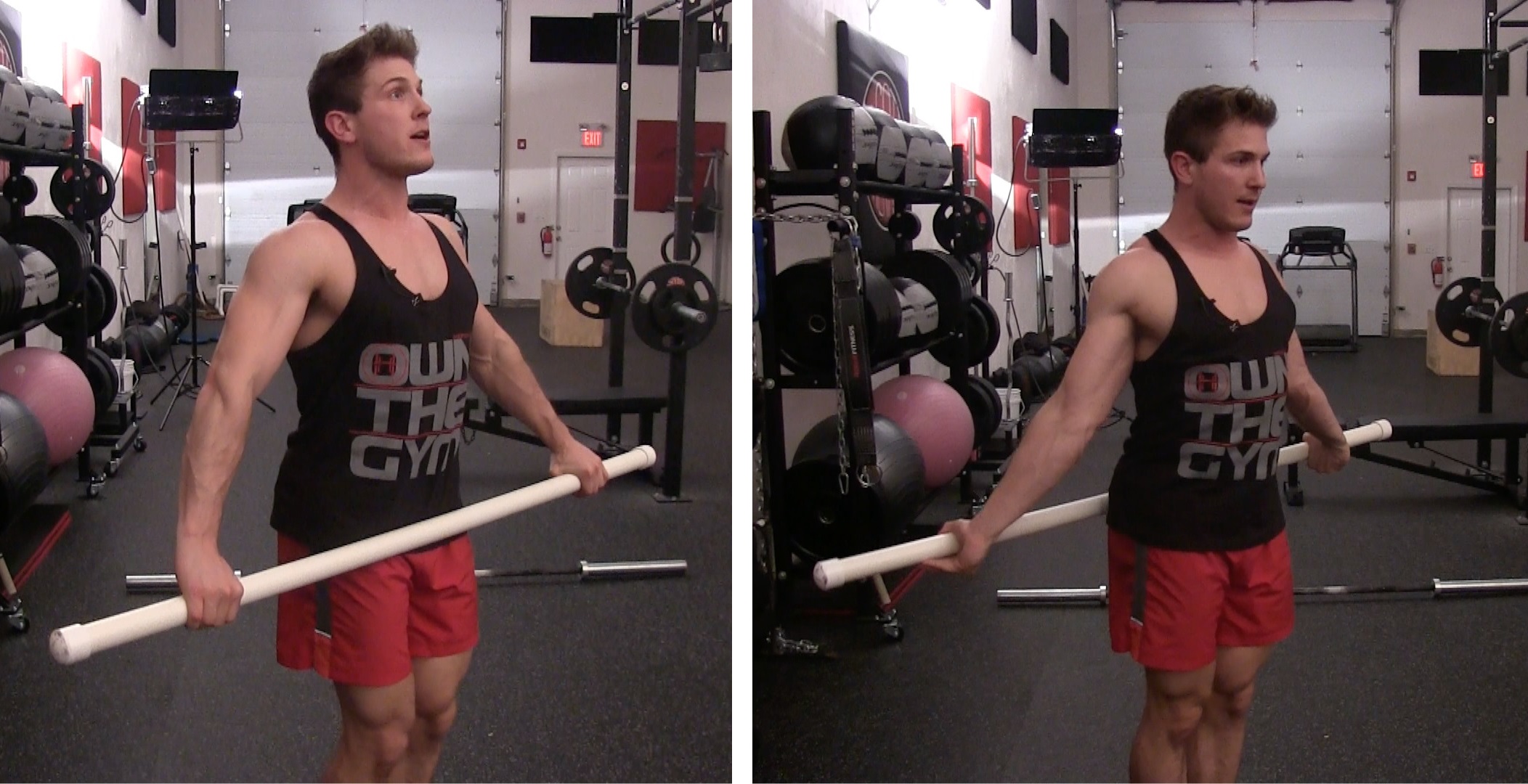
StAnd upright holding a pvc pipe against your thighs with your hands just outside of shoulder width apart. Once in place, while keeping your arms straight, lift the pvc pipe up and over your head until you touch your glutes. Continue to rotate the pvc pipe back and forth for reps.
Complete 2 sets of 10 – 12 reps
Alternating Cross-Body High-Knee Raise

While standing tall lift your left knee up and across your body as you drive your left elbow back as far as you can. As you drive your left elbow back twist your upper body by swinging your right arm across your body as well. As soon as you twist as far as your flexibility will allow, return to the starting position and repeat with the other side.
Complete 2 sets of 20 – 30 seconds
Alternating Toe-To-Hand Touch

Lay on your back with your arms out by your sides and your feet together forming a cross. Once in place, lift your left leg in the air and rotate your hips to the right touching your left foot to your right hand. As soon as your toes touch your hand, return to the starting position and repeat with the other side.
Complete 2 sets of 10 – 12 reps per side.
Scorpion

Lay on your stomach with your arms out by your sides and your feet together forming a cross. Once in place, rotate your hips to bring your right foot to your left hand. As soon as your toes touch your hand, return to the starting position and repeat with the other side.
Complete 2 sets of 10 – 12 reps per side.
Assisted Bodyweight Squat
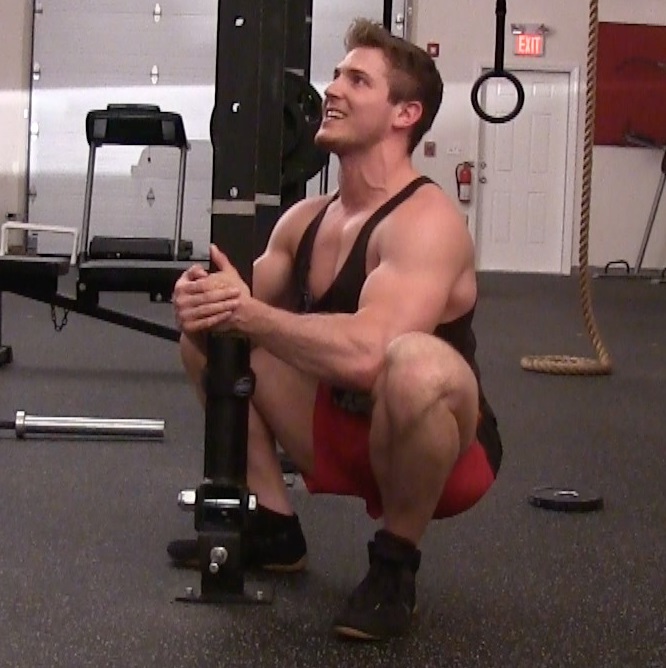
Stand next to a sturdy pole in your squat stance. Once in place, hold onto the pole and use it for support to keep your chest upright as you squat down. When in the down position you are going to take your elbows and use them to push into your knees to open up your hips. Hold this position for 20 – 30 seconds, stand-up and repeat.
Complete 2 – 4 sets of 20 – 30 seconds.
Figure-Four Hip Stretch
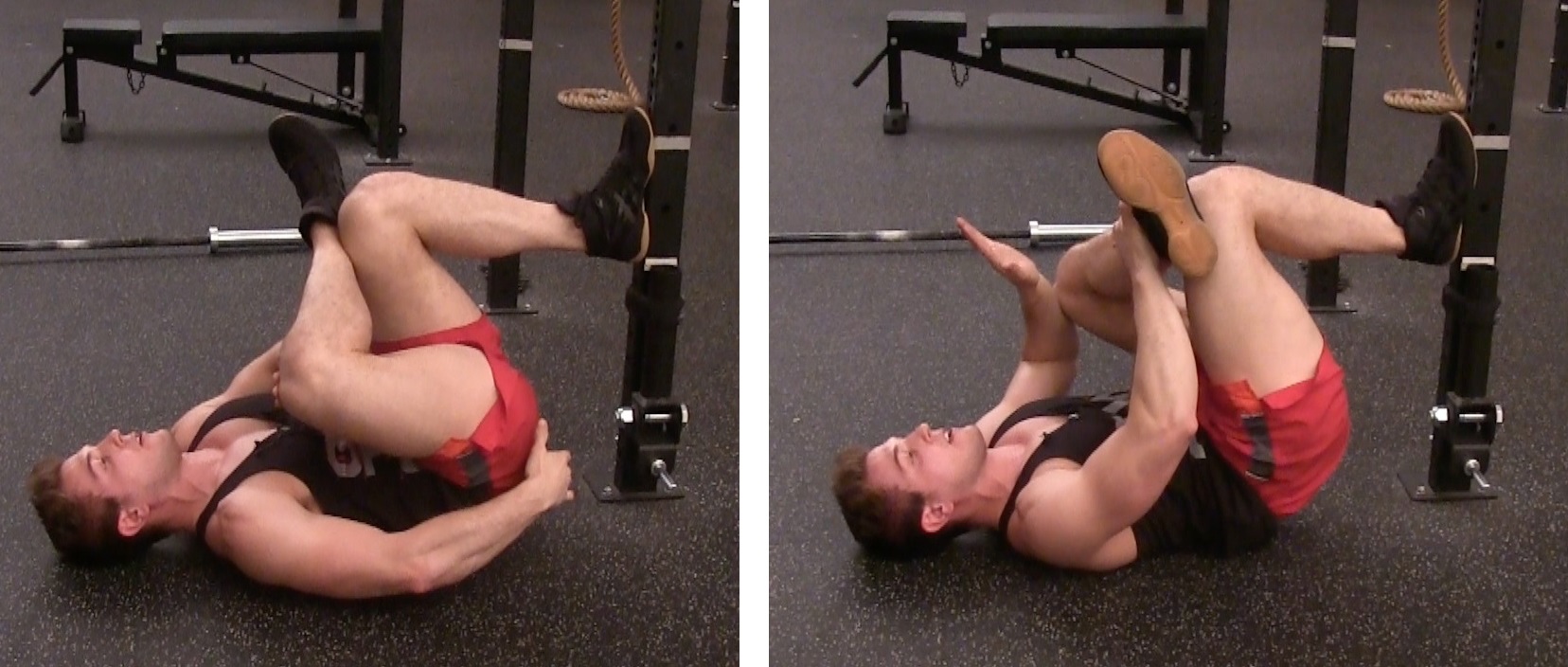
Sit on the ground as close as possible to a wall or sturdy surface. Once in place, lay on your back and place your left foot on the wall. Next, push off the wall raising your hips into the air and take your right ankle and lay it across your left knee. Now slowly lower your hips to the ground while lightly pushing your right knee with your hands until you feel a deep stretch in your hips / glutes. Hold this position for 20 – 30 seconds and repeat with the other side.
Complete 2 – 4 sets of 20 – 30 seconds per side.
These stretches and warm-ups will prove crucial to your overall developement and growth so be sure to prioritize them!








